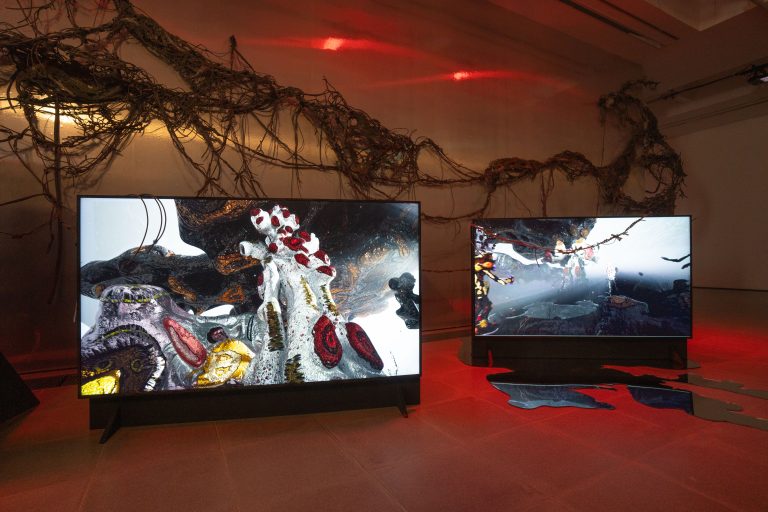Through the new space of virtual reality, the innovative and unknown world of contemporary art is weaving its way into our physical dimension. Gabriel Massan, a Brazilian digital artist, has created such a vibrant experience—a game that allows visitors to start as a new person and embark on a journey of self-discovery.
From June 23 to October 22, Serpentine is hosting an exhibition based on the video game Third World: Bottom Dimension. The display brings the fantastical world to life through set design, sculptures, soundscapes, and films. The game is the result of Massan’s collaboration with interdisciplinary artists Castiel Vitorino Brasileiro, Novíssimo Edgar, singer and music producer LYZZA.
In this interview, Gabriel takes us back to the source—the starting point of the Third World: Bottom Dimension creation, opens up about his childhood projections of the future self, shares his thoughts on the power of multiple dimensions, and reveals his vision of new technologies as new opportunities for artistic practice in today’s world.
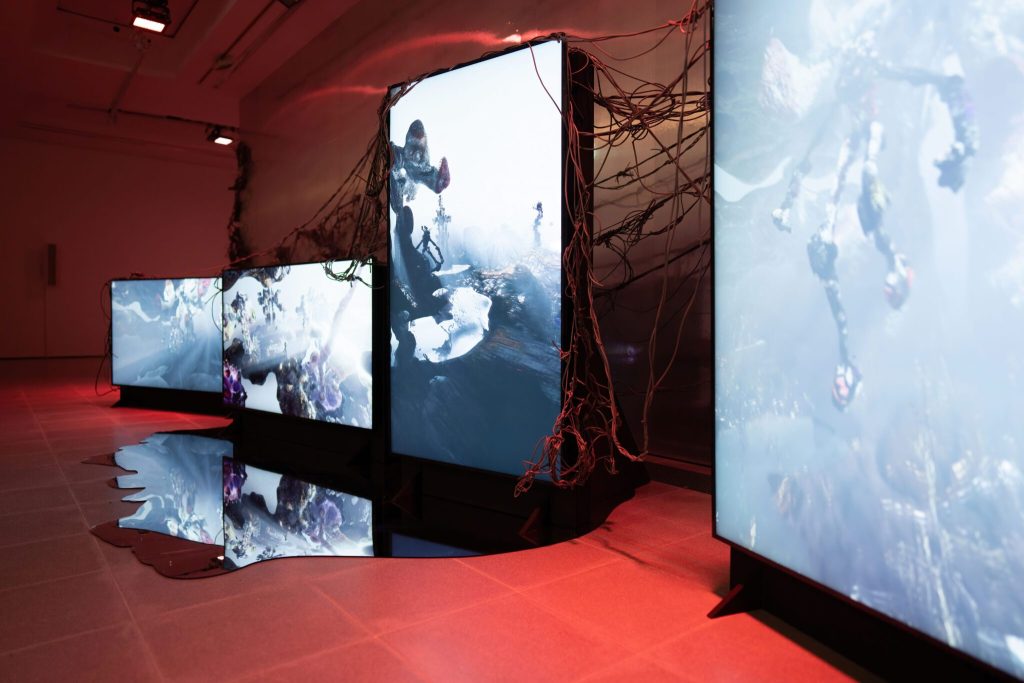
Photo: Hugo Glendinning

Photo: Hugo Glendinning
hube: Our younger selves often provide the most honest answers to the question of our aspirations for adulthood. Over time, these aspirations manifest in different ways. When you were a child, what did you want to be when you grew up?
Gabriel Massan: I remember wanting to be a navy diver, encouraged by the stories that my grandfather traveled the world by ship on long voyages. He always recalled the incredible places he had been when he was still alive.
I believe that diving was my way of expressing that even within the military, I was looking for a position that would inspire me.
Then, when I took acting classes, I fell in love with the idea of being a movie actor and gradually realised that I also wanted to be a screenwriter and director—reimagining the scenes and characters given to me. I told them in the way I wanted and needed to share.
h: Your work usually exists in the digital world, but through your collaboration with Lucas Leão’s eponymous label, it has also entered the physical world. What made you interested in this project?
GM: It was a time when I was still struggling to understand how I could exist in physical spaces as a digital artist, and Lucas invited me to cover his pieces with my images—imprinting my movements on his creations. It was a turning point for me, as I could understand the power of what I was seeking beyond the dictatorial condition of the canvas.
h: Sometimes we immerse ourselves in the virtual world to escape the reality of the world in which we live. How can we find balance in a world where the digital and real are increasingly intertwined?
GM: Creating and editing the spaces we want to inhabit.
All of us in this new possibility of hybrid existence should encourage ourselves to build and design our visions of the world.
h: You define “not knowing” as the key feature of your project Third World: The Bottom Dimension, an experimental video game, exhibition, and web3 project now showing at the Serpentine. What inspired you to invite users to embark on a journey without knowing the identity of their avatar?
GM: I wanted to tell a story of a connection to the world that was to be presented that recognised the player’s ignorance and worked out a relationship structure to the world founded on these first contacts. It’s an experience that makes it possible to form an identity or to recognise the possibility of constructing the whole present in the game.
I wanted the player to see the problems we had constructed as a personal and intimate decision—an awareness of responsibility towards the form that represents them within another universe, another reality. How the audience would behave if their identity were kept anonymous, but their desires and interests were revealed by the actor they control—a fantasy that recognises its relationship to reality, that of a virtual experience.
h: What moments in the design of your hometown influenced the digital world you created for the game Third World: The Bottom Dimension? Did you change it for the better in order to build bridges between people instead of borders and walls?
GM: The game doesn’t simulate my background or my experience of my hometown. But it does translate some of my feelings towards the systems I was and am part of. My transient condition between territories, small conglomerates of strategies that respond to a larger one, and so on within these ecosystems, the game provides space for artists to sow and propose exercises based on their visions of the world, which often don’t correspond to mine but complement it.
h: With the emergence of new technologies and the boundless creativity of artists, the possibilities for creative expression feel almost endless. What are your thoughts on the potential trajectory of virtual art experiences, and how do you think they might be integrated into exhibitions in the future?
GM: We already live in a reality where artists experiment with the most advanced technologies and develop technologies and high-end tools. The conversation depends on these thinkers and creators’ opportunity to share their reflections with the world.
For the traditional art system, the digital artist should be seen as an artist, not a possible artist based on a particular reading.
To allow itself to look to video games, the blockchain, biochemistry, virtual realities, and holograms as an aggregation of meanings and determinants that don’t fit into a collective exhibition on a particular practice but into shows of specific projects and research.
Recognise the diversity of our practices and interests as artists and not as variables of traditional art.
The multiple dimensions can already be accessed and occupied by artists. It depends on the system to understand them as powers. With this delay, I see the dissolution of institutions. Institutions become organisations of artists who are interested in artists.
h: What came first in the process of creating the game Third World: The Bottom Dimension, the character or the place?
GM: Neither one nor the other, it was first thoughts and words that translated the sensations I felt when I questioned certain certainties. First, the idea of the world, then the world and its inhabitants.
To get to this position of questioning, I had to be crossed by the practices of Ventura Profana, Jota Mombaça, Saidiya Hartman, and Denise Ferreira da Silva.
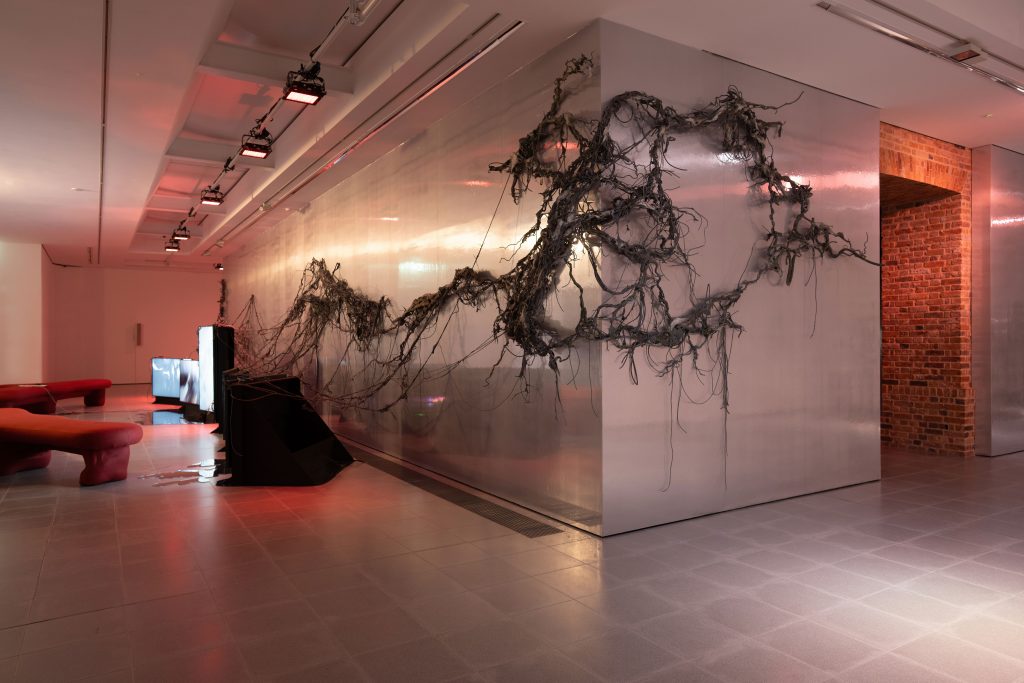
Photo: Hugo Glendinning
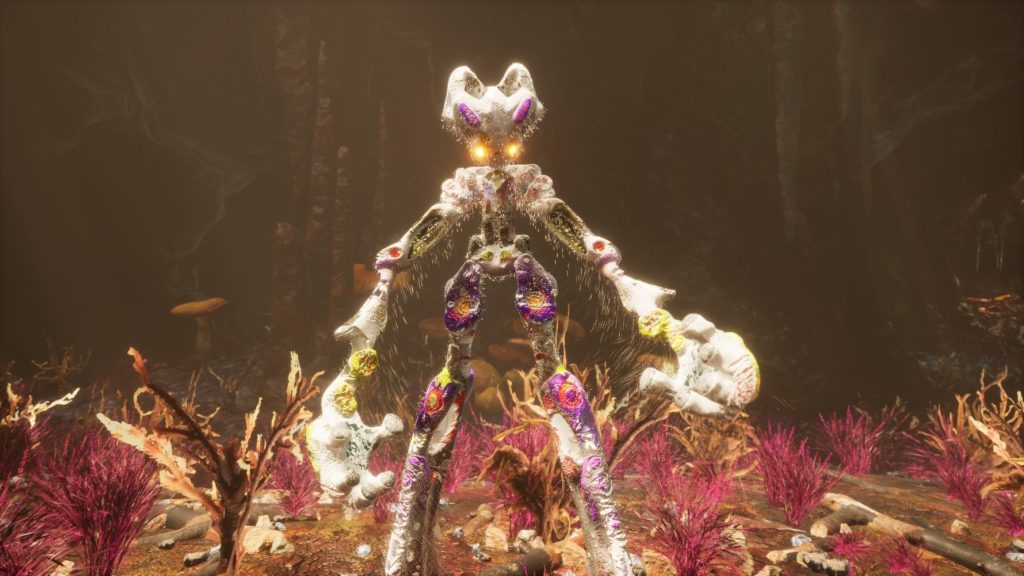
Powered by Tezos
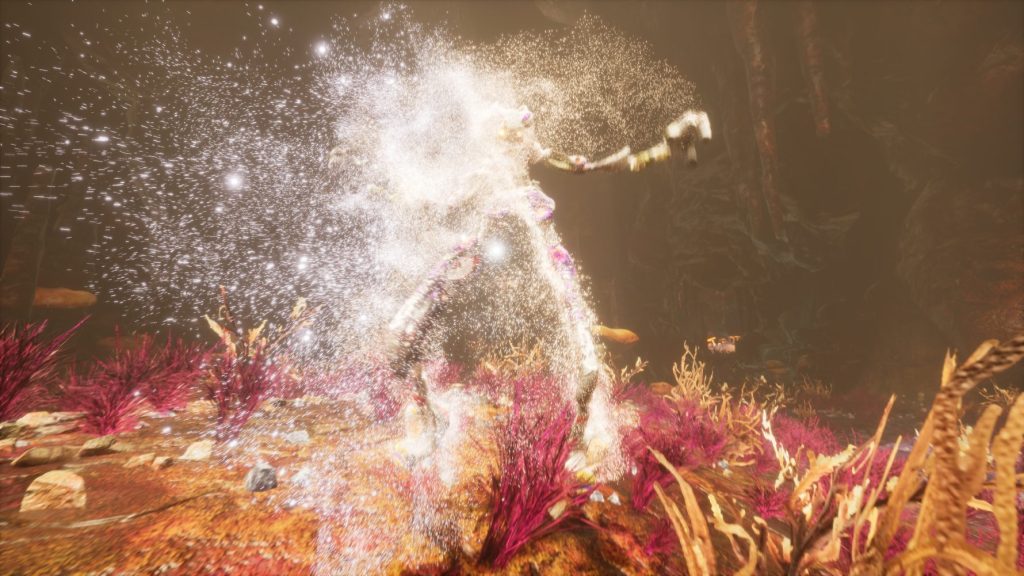
Powered by Tezos
Featured image: Third World: The Bottom Dimension © Serpentine.
Photo: Hugo Glendinning
